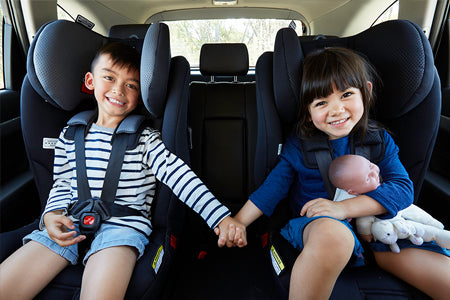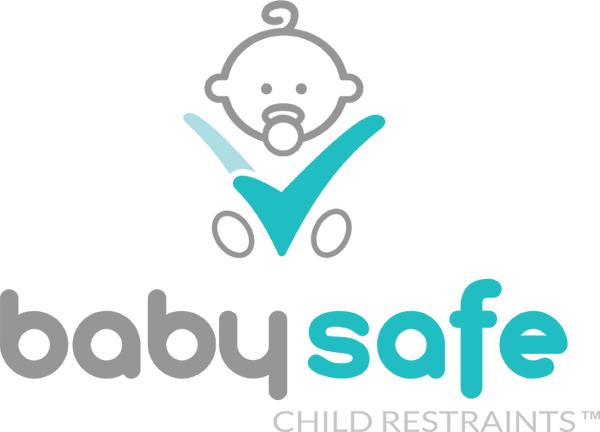Choosing the right restraint
All child restraints sold and used in Australia must comply with Australian/New Zealand Standard 1754 Child Restraints for Use in Motor Vehicles and are marked accordingly. This Standard is one of the most stringent child restraint standards in the world, so child restraints meeting this standard offer good protection in a crash.
Child restraints are designed to match a child’s age and size.
When buying a restraint you need to consider:
- The age and size of your child.
- If the restraint will fit in your vehicle.
- Practicallity.
- Level of protection.
Types of Restraints
-

Rearward-facing restraints
Are for babies up to approximately 6 month or 12 months (depending on the model of child restraint). The restraint is held in place by the seatbelt and the top tether strap. The seat faces rearward and all have an inbuilt six point harness system.
-

Convertible forward-facing restraints
Combine the features of rearward facing and forward facing restraints in one child restraint. They accommodate babies from birth up to approximately 6 months or 12 months in rearward-facing mode. They can then be converted to forward facing for young children approximately 6 months to 4 years old. All have an inbuilt six point harness system.
-

Forward-facing restraints
Are designed for young children approximately 6 months to 8 years old. The restraint is held in place by the seatbelt and the top tether strap. The seat faces forward and incorporates an inbuilt six point harness system.
-

Convertible booster seats
Combine the features of forward facing restraints for young children and booster seats for older children. These restraints come with an inbuilt harness and a top tether strap. When the child outgrows the harness (ie the harness strap are too tight and do not fit over the shoulders correctly) it MUST be removed (as per manufacturer’s instruction) and the restraint is used as a booster seat with an adult lap sash belt.
-

Booster seats
Are suitable for older children approximately 4 to 7 years. They are used with an adult lap-sash seatbelt. Booster seats with high backs and sides provide protection for children in side impact crashes as well as providing support when sleeping.
-

Seatbelts
It is strongly recommended that children aged 7 years and over stay in their booster seats until they are too big for them. Adult lap-sash seatbelts are designed for people with a minimum height of 145 cm. To fit correctly the lap belt is positioned low over the hip and the sash belt sits in the middle of the shoulder and does not touch the neck. Lap-sash seatbelts offer greater protection to passengers than lap-only seatbelts.

PUTTING YOUR CHILD IN A RESTRAINT
Keep your child in the most appropriate restraint suitable for their age and size and only move them to the next category of restraint when he or she no longer physically fits.
• In rearward facing and forward facing restraints, ensure the inbuilt harness is adjusted for a comfortable but firm fit with no slack so that the harness straps are straight and in flat contact with the child.
• In booster seats, make sure the sash belt crosses the shoulder and is in contact with the child’s chest. Make sure the lap belt sits low across the pelvis.
• Always follow the restraint manufacturer’s instructions.

FITTING A RESTRAINT IN A VEHICLE
• Always follow the restraint manufacturer’s instructions when installing a restraint and placing your child in it. Incorrectly using a restraint or using a restraint that is not suitable for your child’s age and size puts your child at a higher risk of serious injury or death.
• Regularly check the fit of the restraint. Ensure clips and seatbelts are done up and are correctly adjusted. Check that harness straps are not twisted or caught.
• It is highly reccomended to use an authorised restraint fitting station to fit your restraint. Fines and demerit points apply to drivers who fail to ensure all children are appropriately restrained in a vehicle.







